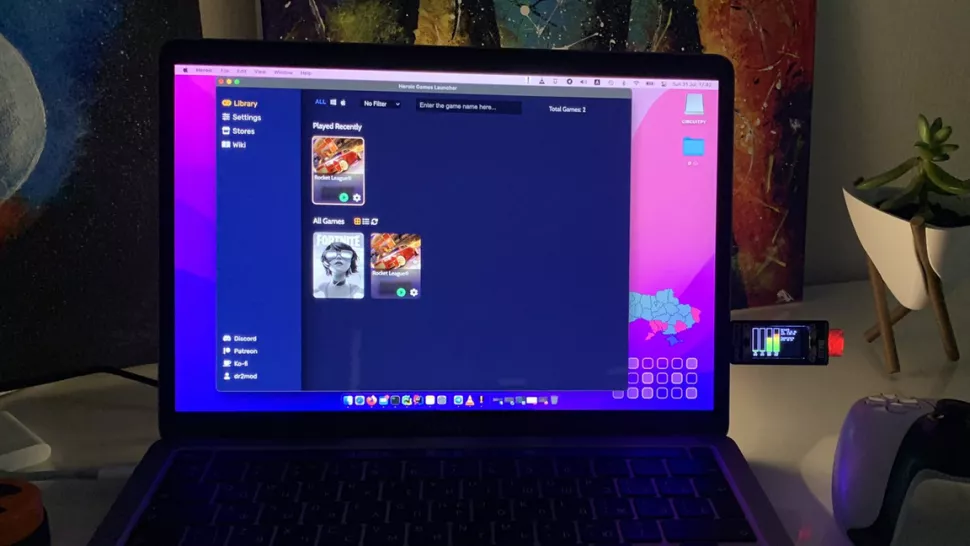today's howtos

-
How to Calibre Server on Ubuntu 22.04
Calibre is known for being a very efficient eBook manager and with important features to be ranked as one of the best. We can also deploy Calibre Server on Ubuntu 22.04 and thus have a more private management and accessible from anywhere.
One of the main advantages of deploying our eBook server with Calibre is that it will be accessible using the Internet. This will also allow you to share it with family and friends without problems, and finally, you can read your eBooks from the web.
So let’s get started.
-
What is PDB in Kubernetes? - Kernel Talks
PDB i.e. Pod Disruption Budget is a method to make sure the minimum number of Pods are always available for a certain application in the Kubernetes cluster. That is a kind of one-liner for explaining PDB. Let’s dive deeper and understand what is PDB. What does PDB offer? Should I define PDB for my applications? etc.
-
How to Install Opera Browser on Linux Mint 21 LTS
Opera is a freeware, cross-platform web browser developed by Opera Software. As a Chromium-based browser, Opera offers a clean, modern web browser that is an alternative to the other major players in the Browser race. Opera has created a sleek and lightweight browsing experience using the Blink layout engine. In addition, Opera has built-in features such as an ad blocker, battery saver, and free VPN. With these features, Opera provides users with an efficient browsing experience that is both fast and private. As more and more people are looking for alternatives to the major browsers, Opera is poised to become a leading player in the browser market.
In the following tutorial, you will learn how to install Opera Browser on Linux Mint 21 LTS series that includes the stable, beta, and development (nightly) branch with steps to install, update and remove the browser using the command line terminal.
-
How to Install MySQL 8.0 on Rocky Linux 9
MySQL is a relational database management system based on SQL (Structured Query Language). It is one of the most widely used database software for several well-known applications. MySQL is used for data warehousing, e-commerce, and logging applications, but web database storage and management is the most commonly used feature. MySQL has been in production use for over 20 years and is considered one of the most secure and reliable database systems. Despite this, it has several drawbacks that should be considered before using it for any mission-critical applications. One such drawback is that it does not support transactions across multiple tables, which can lead to data inconsistency in the event of a failure. Additionally, MySQL does not support some of the more advanced features in other database systems, such as stored procedures and triggers. MySQL is an excellent choice for many applications, but it must be aware of its limitations before using it in a production environment.
In the latest release of MySQL 8.0, the database management system brings new features and security updates. This new release of MySQL adds support for joins with larger data sets, better performance when importing large files, and various improvements to InnoDB, SQL mode, named ‘strict sql_mode,’ which will make MySQL more compliant with the SQL standard. In addition, there are performance enhancements for DML statements and replication and several new security features. With these improvements, MySQL 8.0 provides a more robust and secure platform for managing data.
In the following tutorial, you will learn how to install MySQL 8.0 on Rocky Linux 9 using the command line terminal with instructions on how to secure the MySQL service, update, and, if necessary, remove.
-
How to Install Akaunting on Ubuntu 22.04/20.04 | Mark Ai Code
If you wish to install Akaunting for a demo on a local server or for permanent use on a cloud/hosting VPS server, this article will walk you through the procedures for installing Akaunitng on Ubuntu, Debian, and other comparable Linux distributions.
Akaunting is a free and open-source accounting software accessible on GitHub that runs on PHP and MySQL. As a result, there is no need to utilize any client or install accounting software on every device in a business or household. Once installed, any user who wants to use the Akaunting for a small and medium company or for personal use may access it locally or remotely through the internet and browser.
It has a web interface, comparable to certain WordPress-based websites, and the setup method is likewise similar. As a result, it is not only user-friendly but also a gadget. Yes, it is also compatible with cellphones and tablets.
-
How to change the SSH port on your Server
We will show you how to install Akaunting, a free open-source accounting software, on Ubuntu 22.04/20.04 LTS.
-
Install & Use Darkstat Web Based Linux Network Traffic Analyzer
Darkstat is an easy to use, low-resource, cross-platform, web-based network traffic analyzer application. For managing Linux servers, this is a great tool. It can analyze network traffic, calculates statistics concerning usage, and serves these reports over the HTTPS.
This tool has an integrated web server. Darkstat also supports IPv6 protocol and asynchronous DNS resolution. Because of low-resource usage, it can keep running in the background and collect data and then present that data in a comprehensible format in its integrated web server.
Let’s take a look at how to install Darkstat and then we will get into its uses.
-

- Login or register to post comments
 Printer-friendly version
Printer-friendly version- 530 reads
 PDF version
PDF version
More in Tux Machines
- Highlights
- Front Page
- Latest Headlines
- Archive
- Recent comments
- All-Time Popular Stories
- Hot Topics
- New Members
today's howtos
| Open Hardware: XON/XOFF and Raspberry Pi Pico
|
Security Leftovers
| How to Apply Accent Colour in Ubuntu Desktop
A step-by-step tutorial on how to apply accent colour in Ubuntu desktop (GNOME) with tips for Kubuntu and others.
|






 This section of TuxMachines will no longer have new stories in it (with some caveats, including this post). To see the latest stories go to
This section of TuxMachines will no longer have new stories in it (with some caveats, including this post). To see the latest stories go to 

.svg_.png)
 Content (where original) is available under CC-BY-SA, copyrighted by original author/s.
Content (where original) is available under CC-BY-SA, copyrighted by original author/s.


Recent comments
2 days 1 hour ago
2 days 5 hours ago
2 days 5 hours ago
3 days 12 hours ago
3 days 13 hours ago
3 days 14 hours ago
3 days 14 hours ago
3 days 15 hours ago
3 days 17 hours ago
3 days 19 hours ago